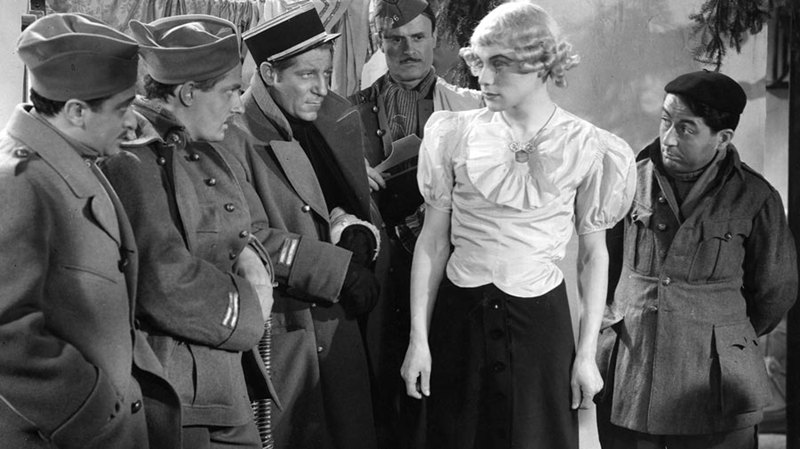“Oblivion Island: Haruka and the Magic Mirror” opens with a story told in the manner of a fairy tale, accompanied by simple artwork in the style of a child’s picture book. The story is about a nearby country shrine where local residents go to pray for the return of lost or misplaced items. It seems that all of the items we lose track of or forget about are actually secreted away from this world by small fox-like creatures called Inari. Whenever we start to forget about things or take them for granted, the Inari are there to claim the item. At this small shrine, people discovered that if they offered the Inari an egg and said a prayer, there was a good chance that the Inari would return that item.
This whimsical tale is being read to a little girl named Haruka by her mother, a patient in a hospital. Haruka and her mother have a close relationship. Haruka deeply treasures every moment with her mother, and especially loves the gifts her mother gives her, in particular a lovely hand mirror. Haruka proudly tells her mom that she takes good care of her things.
Flash forward many years, and Haruka is now 16 years old. Her mother has passed away, and now she lives alone with her father. As a child, Haruka was also close with her father, but as the years went by, the two drifted apart. He is always busy at work, and Haruka is always left to fend for herself. Haruka feels neglected by her father, and in a fit of loneliness, she suddenly remembers the beautiful hand mirror her mother gave her long ago. Whatever happened to it? It turns out that even though Haruka knows the story of the Inari who take our forgotten treasures, even she managed to lose track of things she once held dear.
Filled with a sudden need to find the mirror, Haruka travels to the small country shrine where the Inari supposedly live. She only intended to offer an egg and a prayer to the shrine in hopes of recovering the mirror, but amazingly enough, she actually encounters a real Inari! Haruka follows the creature through the woods and right through a mystical portal that whisks her off to an amazing adventure. Haruka discovers that Inari inhabit a fantastical world called “Oblivion Island” where they use all the misplaced items forgotten by humans. This island is a breathtaking sight, with twisting narrow streets, incredible vistas, and haphazard patchwork buildings.
Together with Teo, the Inari that inadvertently led her to Oblivion Island, Haruka sets out on a journey to find the mirror she lost. Teo is a rather timid creature, focused only on his work of gathering misplaced items from the human world. He is afraid of humans, in awe of the powerful Baron who rules over Oblivion Island, and easily bullied by other Inari. Yet he also has dreams, among them being the desire to build a real airplane that can fly. After meeting Haruka, Teo’s world view begins to change. Haruka is such a bold, determined character, that he can’t help but fall into her pace. He (somewhat unwillingly) helps her on her quest for her mirror, and along the way he learns to face his fears and grab hold of what he wants.
Will Haruka ever find her beloved mirror? Oblivion Island is a huge place, filled with crazy creatures and outrageous obstacles. How can she possibly find one small hand mirror in such a place? It will take personal strength, guidance from Teo, and assistance from a long lost friend for Haruka to achieve her goal.
“Oblivion Island: Haruka and the Magic Mirror” is a charming film. This DVD set has 2 disks. The film takes up disk 1 and the bulk of the extras fill out disk 2.
The story of “Oblivion Island” is rather familiar, but the style and scope in which it is told is absolutely lovely. There is a unique “look” to the film that I haven’t seen often. All of the main characters are rendered in a CG style like you’d see in a video game. However, the backgrounds are highly detailed painted illustrations like you’d find in traditional 2D animation. Somehow the 3D characters and 2D backgrounds blend perfectly for a really nice effect. The world of the Inari is fantastic – full of colors, textures, and personality. The detail is simply amazing. The Inari use human household items to construct the many wonders of their world, and if you watch the scenery closely, you can glimpse all sorts of clever uses for objects.
Haruka as a character is interesting because she starts out a bit selfish, only focusing on her problems, and not giving much thought to her father, her friend, or even Teo. However, as the story progresses, she grows and changes as a person, and comes to really value everyone and every thing around her. I really appreciated how Haruka doesn’t hesitate and goes forcefully after what she wants. The sights and sounds of a magical world might scare other girls, but Haruka faces every challenge head on. She is also quick to learn from her mistakes and isn’t afraid to apologize when she has done wrong.
There is a nice message in “Oblivion Island” about holding on to what is important and not letting people and things we treasure drift away. There is the surface story about the recovery of lost physical items, and a deeper story about the loss of important memories and relationships with loved ones. I think this is an important message, and one that this film communicates in a powerful, entertaining way.
Video:
“Oblivion Island” is presented in anamorphic wide screen and looks gorgeous. There is a luminous glow to all of the characters and scenery. The color, mainly purples, golds, blues, and reds, are rich and deep. If the DVD looks this good, I can only imagine how amazing the Blu-ray must look. I watched the DVD-only release, but there is also a Blu-ray/DVD combo pack.
Audio:
A nice surprise here from FUNimation. We get both a 5.1 English Dolby Digital track, and a 5.1 Japanese track. Both audio tracks sound fantastic. The soundtrack for this film is delightful. It’s full of twinkling strings, harps, and flutes. It really helps create a magical feel to the Oblivion Island world. I’m thankful that the audio quality here does the great soundtrack justice. I mainly watched this film in the original Japanese because I am a fan of the actress, Ayase Haruka, who plays the heroine, Haruka. I’ve enjoyed Ayase’s acting in several live-action TV dramas and was surprised to see her listed here as a voice actress. However, I was also happy with the English voice actors. For once, they don’t all sound too old for their roles. I was quite happy with the English dub sections I sampled.
Extras:
Disk 1 contains only 1 extra – a trailer for the film. The rest of the extras are piled onto disk 2. And wow, do they pack in the Extras. First up is a quick Behind the Scenes feature which takes a peek at the animation studio that created the breathtaking scenery and characters in the film. They describe the planning process and a bit about what it took to get the film made. Next is a clip that follows voice actress Ayase Haruka as she visits the Fushimi Inari shrine in Kyoto. This is followed by another clip of her and the “Oblivion Island” director, Sato Shinsuke, visiting “Battleship Island,” a real-life island abandoned by the Japanese. This island has ruins of a once bustling small city on it. Next is a feature that shows all the voice actors and main staff at the Japanese premiere of the film. They introduce themselves and briefly speak about their experiences making the movie. This is followed by some more words from the cast and a look at the US premiere of the film in New York. Next we have a game called Haruka & Teo’s Puzzle Panel, a brief feature explaining the folklore surrounding the Inari, and several commercials and trailers. All in all, this is a nice set of extras.
Film Value:
While not terribly original, plot-wise, “Oblivion Island: Haruka and the Magic Mirror” is nevertheless a charming film, and worth the watch for the style and scenery alone. The attention to detail is fantastic, the action sequences are quite exciting, and there is a great message and lesson to be learned.


